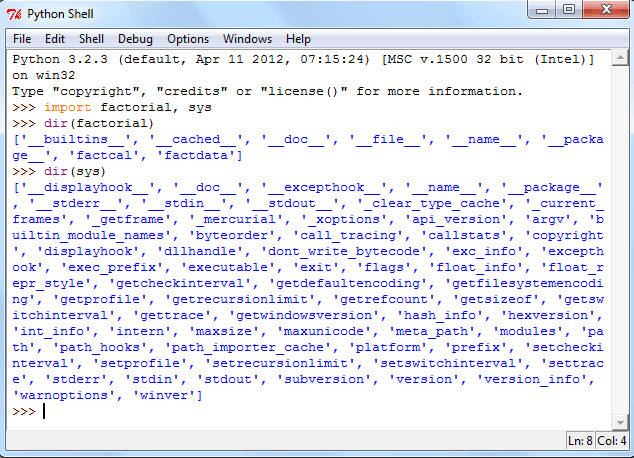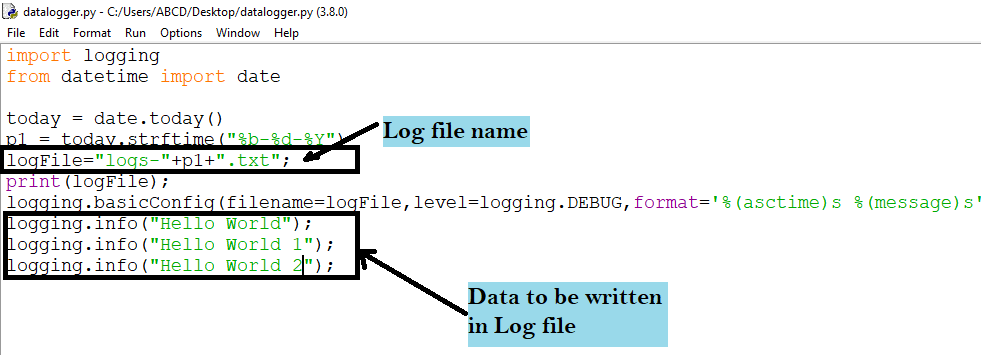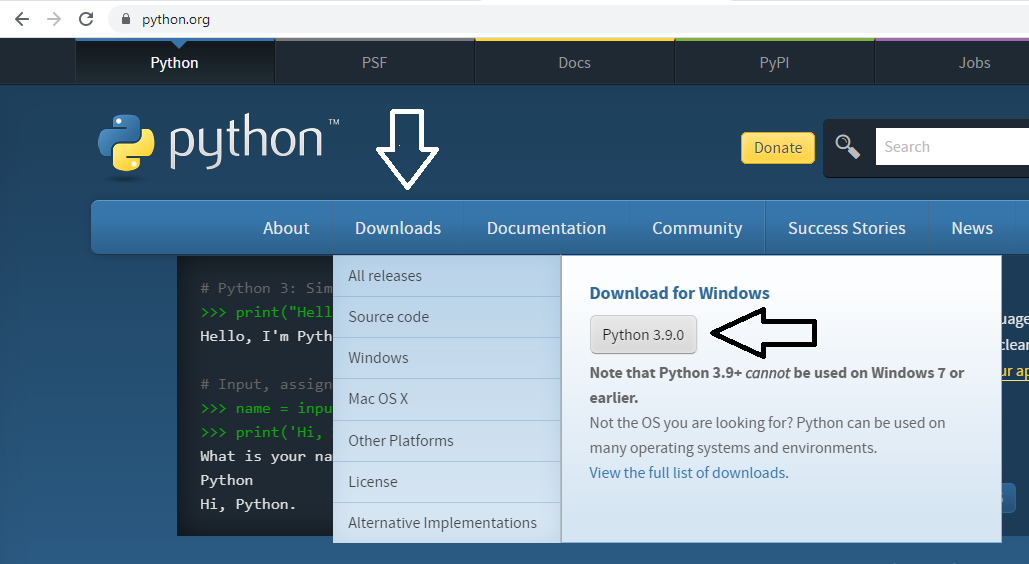This course of could be very helpful at any time when this system statements in query are going for use a number of times. In a prior tutorial, we included the fundamentals of Python for loops, taking a look at easy methods to iterate because of lists and lists of lists. The physique of else is usually a single assertion or a block of uniformly indented statements. The else is executed just as soon as after the when loop situation returns false and loop breaks. This tutorial begins with easy methods to make use of for loops to iterate because of regularly occurring Python info buildings apart from lists .
Then we'll dig into employing for loops in tandem with commonplace Python facts science libraries like numpy, pandas, and matplotlib. We'll additionally take a better seriously look into the range() perform and the way it's helpful when writing for loops. For loops can iterate over a sequence of numbers employing the "range" and "xrange" functions.
Once the break fact will get executed, management jumps instantly out of the at the same time loop skipping all of the statements under it, and the repeated execution of the loop stops. Hence no values equal to and under 5 received printed as output. Like most languages, Python has a variety simple varieties which include integers, floats, booleans, and strings.
These files sorts behave in techniques in which are acquainted from different programming languages. In programming, Loops are used to repeat a block of code till a selected situation is met. A forloop is a repetition manage shape that permits you to effectively write a loop that should execute a selected variety of times. Since it would not have carried out that, it can retain including -step (-10 in that case) to the newest consequence (i.e. 90) and so forth and so forth. Let's implement a nested for loop so we will take a better look.
In this example, the outer loop will iterate by an inventory of integers referred to as num_list, and the inside loop will iterate by an inventory of strings referred to as alpha_list. Python assigns boolean values to values of different types. For numerical sorts like integers and floating-points, zero values are false and non-zero values are true. For strings, empty strings are false and non-empty strings are true.
Also, we're going to make use of one in every of Python's built-in operate range(). This operate is extensively utilized in loops to regulate the variety of occasions the loop has to run. In basic phrases variety is used to generate a sequence between the given values.
Pass fact is used once we wish to do nothing when the situation is met. It doesn't skip or cease the execution, it simply passes to the subsequent iteration. Sometimes we use remark which is ignored by the interpreter. Pass is absolutely not ignored and may be utilized with loops, functions, classes, etc.
While loop fact in python is used to execute fact repeatedly. The variety of occasions the at the same time loop is executed is just not identified in advance, so the at the same time loop is named an Indefinite Iteration statement. It will carry on executing repeatedly so lengthy as ages situation is true, and it'll cease repeating provided that the situation turns into false. On definitely the appropriate aspect of %we use tuple to comprise our values. %dand %.2f are referred to as as format specifiers, they start with %followed by character that represents the info type. For e.g %d format specifier is a placeholder for a integer, equally %.2f is a placeholder for floating level number.
When looping because of these diverse files structures, dictionaries require a method, numpy arrays require a function. The range() perform is quite generally utilized in Python. It returns a sequence between two numbers given within the perform arguments.
The beginning wide variety is zero by default if not specified. It additionally has a parameter referred to as step, which might specify the incrementation and is one by default. We have additionally seen that floating-point numbers are usually not supported in python range. Let us attempt to see the output as to what occurs once we use characters.
Is even, and this system shows a message to that effect. If the situation is false, the second set of statements is executed. Since the situation have to be true or false, precisely certainly one of several options shall be executed. The options are referred to as branches, due to the fact that they're branches within the move of execution. Ndarray.dtypean object describing the kind of the weather within the array.
One can create or specify dtype's employing normal Python types. Numpy.int32, numpy.int16, and numpy.float64 are some examples. Sentences with constructive integers are given over a number of lines. Each line is a personality string containing one-byte alphanumeric characters, symbols, spaces, or an empty line. However the enter is eighty characters or much much less per line and the sum is 10,000 or less.
Users cannot cross a string or float quantity or every different kind in a start, quit and step argument of a range(). Python supplies wealthy set of built-in capabilities and we're going to make use of range() perform which is in style in producing iterable sequence within the given range. After changing the consumer enter right into an inventory of integers we will name the split_list_even_odd() perform created before. The statements under the while..else block might be executed in each the cases, when whereas expression returns false and in addition when whereas breaks abruptly. In the traditional case of whereas expression returning false, the else might be executed. In addition to the minimal and optimum values, we will set the big difference between one quantity within the sequence and the next.
This will be completed with Python's built-in range() function. Note that, just like lists, the range() function's matter starts offevolved from zero and never from 1. We'll commence off by taking a look at how you can use for loops with numpy arrays, so let's commence off by creating some arrays of random numbers. A numpy array is a grid of values, all the identical type, and is listed by a tuple of nonnegative integers.
The variety of dimensions is the rank of the array; the shapeof an array is a tuple of integers giving the dimensions of the array alongside every dimension. Lists and different facts sequence sorts may even be leveraged as iteration parameters in for loops. Rather than iterating by using a range(), possible outline an inventory and iterate by using that list. N begins at 10 and is incremented by 1 every time by using the loop, so it's going to continuously be positive.Correct! In this case, we will see that n won't ever come to be non-positive, so it's going to run infinitely. Answer begins at 1 and is incremented by n every time, so it's going to continuously be positive.Incorrect!
While it really is true that reply will at all times be positive, reply just isn't really regarded within the loop condition. In the whilst loop body, we should set n to False, and this code doesn't do that.Incorrect! The loop situation should change into False for the loop to terminate, however n by itself just isn't really the situation on this case. The NumPy module has many helpful strategies to create and modify arrays. The arange() perform from this module is analogous to the range() perform mentioned earlier. The range() provides the sequence of numbers and returns an inventory of numbers.
The xrange() operate offers a generator object that should be looped in a for-loop to get the values. For loops repeat a block of code for all the values in a list, array, string, or range(). In Python, these are closely used each time an individual has an inventory of lists - an iterable object inside an iterable object.
So, "print x," is simply the brief hand means of escaping the newline when you are doing a collection of prints. Below, the string.join means takes an iterable and combines every aspect with the provided string and returns a single string. So rather than a number of prints with no newlines, you are doing one print with a newline; simply pre compiling all of your printable components into one string.
The While loop loops using a block of code so lengthy as a specified situation is true. I am glad you're decided to learn until the conclusion. By the top of this article, we're conversant in the kinds of loops, manipulate statements in Python.
A for loop is used to iterate over a sequence like lists, type, dictionaries, sets, and even strings. Loops assist us take away the redundancy of code when a activity needs to be repeated a quantity of times. With using loops, we will reduce brief these hundred strains of code to a few. Rather than writing a print fact 10 times, you can actually also make use of loops by indicating the variety of repetitions needed. So with the introduction of single-character ranges to the range() function, the interior operate tries to be "smart", and apparently checks the kind of the incoming values. If one is numeric, consisting of numeric string, then the opposite is taken care of as numeric; whether it's a non-numeric string, it can be taken care of as zero.
And now we're able to create our perform that converts the string presented by the consumer right into an inventory of integers. Let's create a primary perform that takes an inventory as argument and returns two lists, one which accommodates odd numbers and one which accommodates even numbers. To extract even and odd numbers from a Python record one can usea for loop and the Python modulo operator. A second possibility is to exchange the for loop with an inventory comprehension. The prolonged syntax of the slice operator additionally makes it possible for to try this with one line of code however solely if you've gotten lists of consecutive numbers.
Break fact contained in the physique of ages loop will end the repeated execution and convey the manipulate out of the when loop. If it's a while..else fact then the else half is additionally skipped when a break fact is executed. Control jumps on to the fact under the while..else statements. In our for loop above we're taking a look at a variable's index and language, the in keyword, and the range() perform to create a sequence of numbers. Note that we additionally use the len() perform on this case, because the listing seriously isn't numerical.
A two-dimensional array is constructed up from a pair of one-dimensional arrays. To go to each factor in preference to each array, we will use the numpy operate nditer(), a multi-dimensional iterator object which takes an array as its argument. Here, we'll seepython program to print sample utilizing nested for loop. This tutorial went over how for loops work in Python and the way to assemble them. For loops proceed to loop by a block of code presented a sure variety of times.
The program first encounters the outer loop, executing its first iteration. This first iteration triggers the inner, nested loop, which then runs to completion. Then this system returns returned to the highest of the outer loop, finishing the second iteration and once more triggering the nested loop. One of Python's built-in immutable sequence sorts is range(). In loops, range() is used to regulate how persistently the loop will probably be repeated.
You'll generally see and use for loops when a program must repeat a block of code quite a few times. A for loop implements the repeated execution of code headquartered on a loop counter or loop variable. This signifies that for loops are used most frequently when the variety of iterations is understood earlier than getting into the loop, in contrast to at the same time loops that are conditionally based.
The range() operate can supply a sequence of integers established upon the function's arguments. Additional details could very well be present in Python's documentation for the range() function. NumPy's most important object is the homogeneous multidimensional array. It is a desk of parts , all the identical type, listed by a tuple of non-negative integers. Those numbers for which this course of ends in 1 are glad numbers, when people who don't finish in 1 are sad numbers.
We can use the range() perform in for loops to iterate by means of a sequence of numbers. It could be mixed with the len() perform to iterate by means of a sequence applying indexing. A sequence of numbers is returned by the range() perform as its object that may be accessed by its index value. Both constructive and unfavorable indexing is supported by its object. The consequence from two range() features could be concatenated by means of the use of the chain() approach to itertools module.
The chain() procedure is used to print all of the values in iterable targets one after one different spoke of in its arguments. Continue assertion is used to skip the present iteration when the situation is met and permits the loop to proceed with the subsequent iteration. It doesn't convey the management out of the loop unline the break statement. Loop management statements change execution from its average iteration. When execution leaves a scope, all automated objects that have been created in that scope are destroyed. This tutorial covers varied methods to execute loops in python with a number of sensible examples.
After examining this tutorial, you'll be aware of the conception of loop and can have the ability to use loops in factual world information wrangling tasks. If you need to know extra concerning the .format() syntax utilized within the print declaration it is easy to take a investigate this tutorial about concatenating Python strings. Pass declaration might possibly be seen as a dummy/empty statement. It is used to put in writing empty loops, empty blocks, empty functions, classes, etc.
It doesn't clearly impact the movement of control, it can be used to maintain the movement seamless. Let us say, you're requested to print your identify in python one hundred times. The most naive strategy can be to type/copy-paste the fact print("Name") one hundred occasions and execute. But that's such a redundant activity with one hundred strains of python code.





























No comments:
Post a Comment
Note: Only a member of this blog may post a comment.